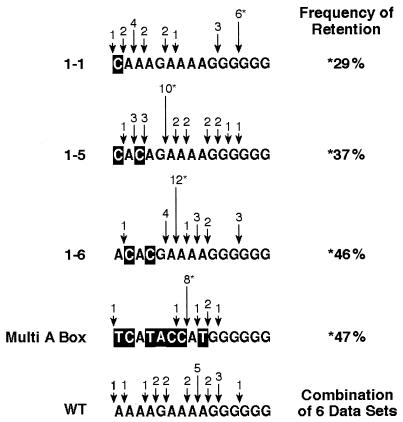FIG. 4.
Sequence of PPTs retained at the 2-LTR circle junction from vectors containing wild-type PPT or PPT mutants. The sequence of the PPT for each mutant is shown. The arrows represents the 5′ end of the retained PPT segment. The segment retained most frequently is indicated by an asterisk, and the frequency of that particular PPT segment is given in the column at the right of the figure. The height of the arrow is proportional to the frequency of observation of each given PPT segment. The sequences derived from wild-type PPTs also contain the results obtained in previous studies (which were included to increase the number of observations). Statistical analysis of the probability of retention of a PPT at each site marked as a preferred cleavage site indicates that these frequencies of retention at each preferred site did not occur by chance, the probability for the site of preferred retention for the wild type was 7.25 in 1,000; the probability for each of the mutants shown was less (see the text).

